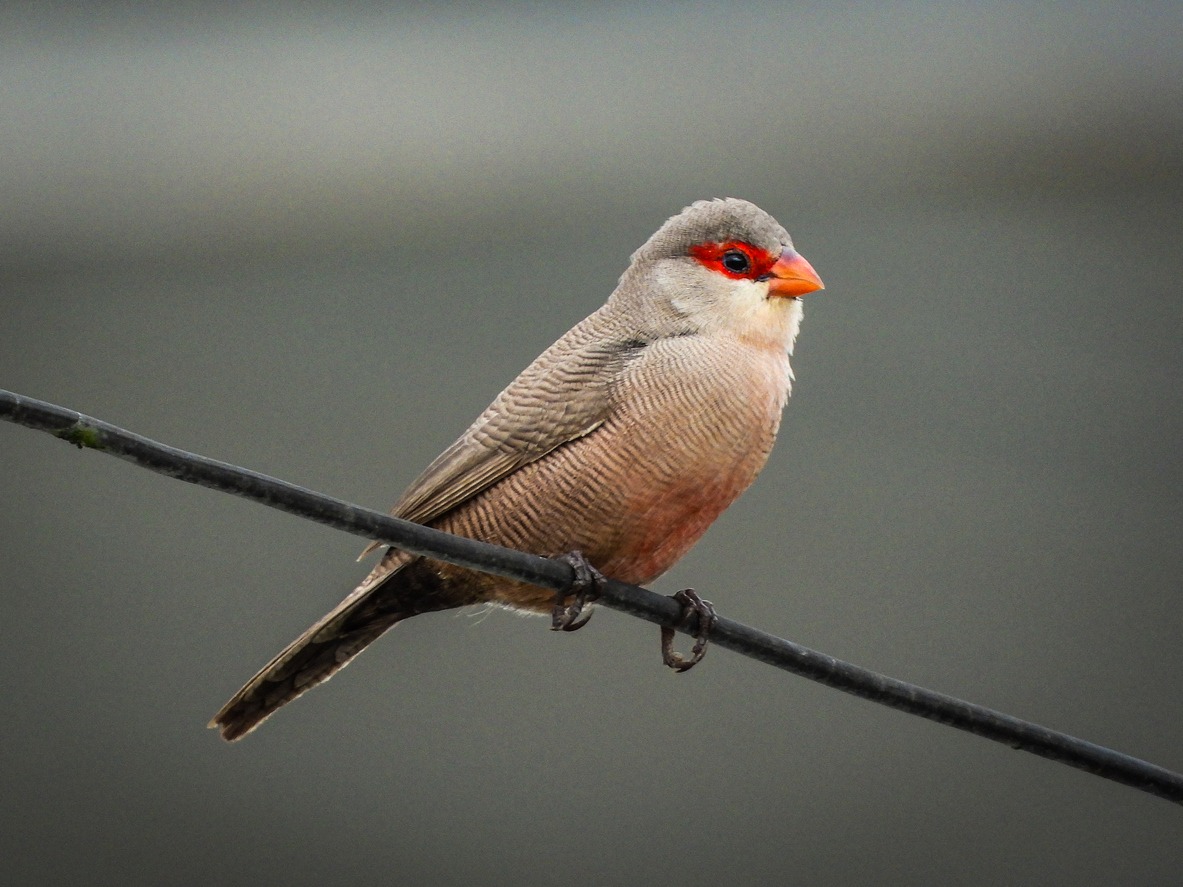It is a smallish finch, with a red bill, long tail, and short wings. The plumage is almost entirely gray, accentuated by gray-brown bars, a dark vent, and conspicuous red mask. Often occurring in vocal groups in reedy and grassy areas in its African range, otherwise, in urban areas. It has been introduced across many parts of the globe, such as in Puerto Rico, Brazil, Iberian Peninsula, and the Pacific and Indian Ocean islands.
Read further to know more about the Common Waxbill.
What is a Common Waxbill?
Common Waxbill (Estrilda astrild), also called the St Helena waxbill, is a tiny passerine bird belonging to the finch family Estrildidae. It is endemic in sub-Saharan Africa but is now living outside its natural distributional range. The species has been introduced in many parts of the world and is widely-renowned as it is easy to keep in captivity.
Its seven levels of classification are as follows:
Kingdom: Animalia
Phylum: Chordata
Class: Aves
Order: Passeriformes
Family: Estrildidae
Genus: Estrilda
Species: E. astrild
Common Waxbill Physical Description
Common Waxbill is a small finch, growing 4 to 5 inches, or 10.1 to 12.7 centimeters, and weighing around 8.9 grams. It has gray upperparts, with prominent gray-brown bars. Underparts have a pinkish-beige tone, with dark gray bars on the flanks. A bright red patch occurs in the middle of the belly, varying in color intensity among each bird, and becoming duller as it stretches to the breast and side of the body. Meanwhile, undertail tetrices and vent are dark, with black and whitish tip area.
On the head, the crown appears to be slaty-grey, subtly washed brown. The throat and cheeks are whitish while a bright red stripe runs through the eyes, stretching to the ear coverts and lores. Eyes are brown. The bill is conical, bright red. Legs and feet are dark grayish. The tail is relatively wider at the base. Both sexes look similar, but females are paler and have a duller red patch on the belly. Juveniles are also subtler, with a blackish bill and lack the red belly mark.
Where can they be spotted?
Common Waxbill thrives in dry, grass areas, with the presence of withered shrubs, near water sources. It can also be found in pastures, open lands, clearings, and forest edges. Outside its African range, it frequents urban areas. The species is native in sub-Saharan Saharan, but has been introduced in various tropical islands and warm regions.
Interesting Facts You Should Know About the Common Waxbill
Common Waxbills are granivores, whose diet comprises various grass seeds. These birds also feed on insects, especially during the breeding season, to supplement the high protein requirement in their diet.
They forage in feeding flocks during the day, early in the morning or in the late afternoon. Using their slender claws, they cling onto stems and pluck seeds from flower heads. Otherwise, they look for seeds on the ground. Common Waxbills periodically drink water, as seeds contain little moisture.
Common Waxbills are gregarious birds, often seen moving in huge flocks, while aggregating in communal roosts at night. They have an array of buzzing and twittering sounds and a conspicuous piercing flight call. Meanwhile, the song is nasal and raspy, with a descending ending note.
Their breeding season usually takes place during the rainy season, when insects are abundant enough for feeding their offspring. Their nest is distinct as it often has a second nest, above the initial nest itself, called the “cock’s nest,” in which the male Common Waxbill sleeps. The nest is placed on the ground, characterized by a ball of dry coconut fibers and grasses, with a narrow entrance.
The female lays a clutch of 4 to 7 eggs, which both parents will incubate for about 11 to 13 days. Juveniles will fledge around 17 to 21 days after hatching. The Pin-tailed Whydah often parasitizes the Waxbill nest, but unlike other Cuckoo species, the Whydahs doesn’t “destroy” the Waxbills’ chicks, and adults can often be seen tending mixed broods.
The Common Waxbill has an extensive range and a huge number globally. They are currently classified as Least Concern (LC) under the IUCN Red List of Threatened Species.
WILDLIFE PARKS AND RESERVES WHERE THIS SPECIES IS FOUND:
BOTSWANA
SOUTH AFRICA
Kalahari Gemsbok National Park
NAMIBIA
ZAMBIA
ZIMBABWE
BOTSWANA BIRDS | SOUTH AFRICA BIRDS
NAMIBIA BIRDS | ZAMBIA BIRDS | ZIMBABWE BIRDS
